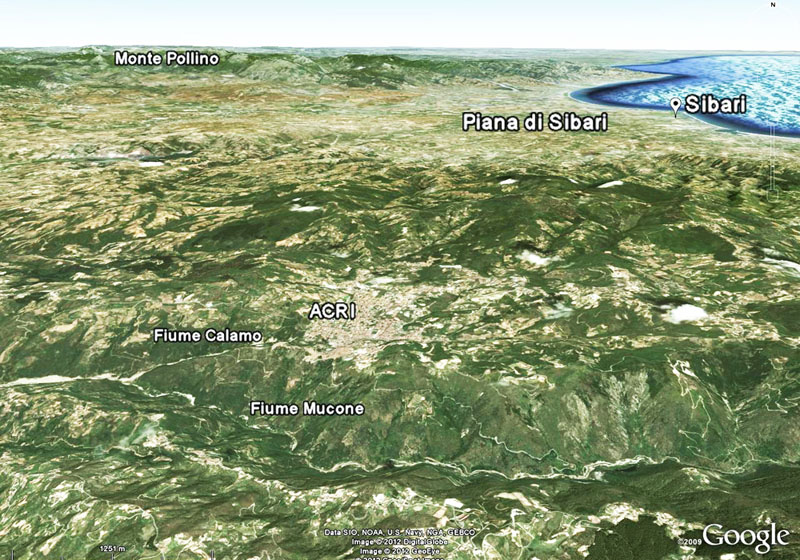Setting
Calabria, is to a large extent mountainous with some 42% of the region’s territory being covered by mountains, 49% is hilly, and only 9% occupied by plains. The Sybaris Plain is the largest valley of Calabria and is particularly vulnerable to desertification. Indeed, the Plain, which originated from the alluvial deposits of the river Crati, is bounded by a low and mostly sandy coast. To the North, the area extends up to the Eastern slopes of the Pollino massif with a predominance of limestone and rocky coastline.
The plain is also a victim of a massive coastal building spree due to tourism, amongst others. Moreover, that area is characterized by an extensive industrial agriculture, which causes dewatering and the detriment of the mountain areas.
During the 1960s, Italian authorities have adopted the policy of “large water reservoirs” (“politica dei grandi invasi”) as evidenced by the construction of several breakwaters, such as the one on the river Esaro. This was the answer authorities supposed to provide in order to solve the problems of drought and water supply in agriculture, but this large damming model did not consider the risks of social and environmental impact that artificial reservoirs could produce in areas of environmental and landscape relevance. Moreover, this policy required massive financial burden for public finances.
In addition, during the years in this area the natural biodiversity has been profoundly altered and fragmented by human activity. In particular, the Mediterranean forests of the basal plane that had characterised the Plain of Sybaris have been completely cut down and replaced by extensive crops. This is the reason why, in the area of the Piana, the intensity of land use and climatic features have caused a deep desertification.
As far as the social profile is concerned, it is an area populated by many migrants, coming especially from Mediterranean Countries and Sub-Saharian Africa, employed particularly in the agricultural sector. They are often victims of discrimination and human rights violations, and they work without proper salaries and securities. The authors of this case study are constantly monitoring the immigrants’ condition since the sad occurrences of Rosarno in January 2010, and they are involved in activities aimed at migrants’ rights advocacy, legal assistance, promotion of social inclusion and intercultural dialogue.
The ancient city of Sybaris was founded in the 7th century BC by the Achaeans, and became proverbial for its luxury (hence our word sybaritic). The city was destroyed in 5th century BC by the people of Croton.



